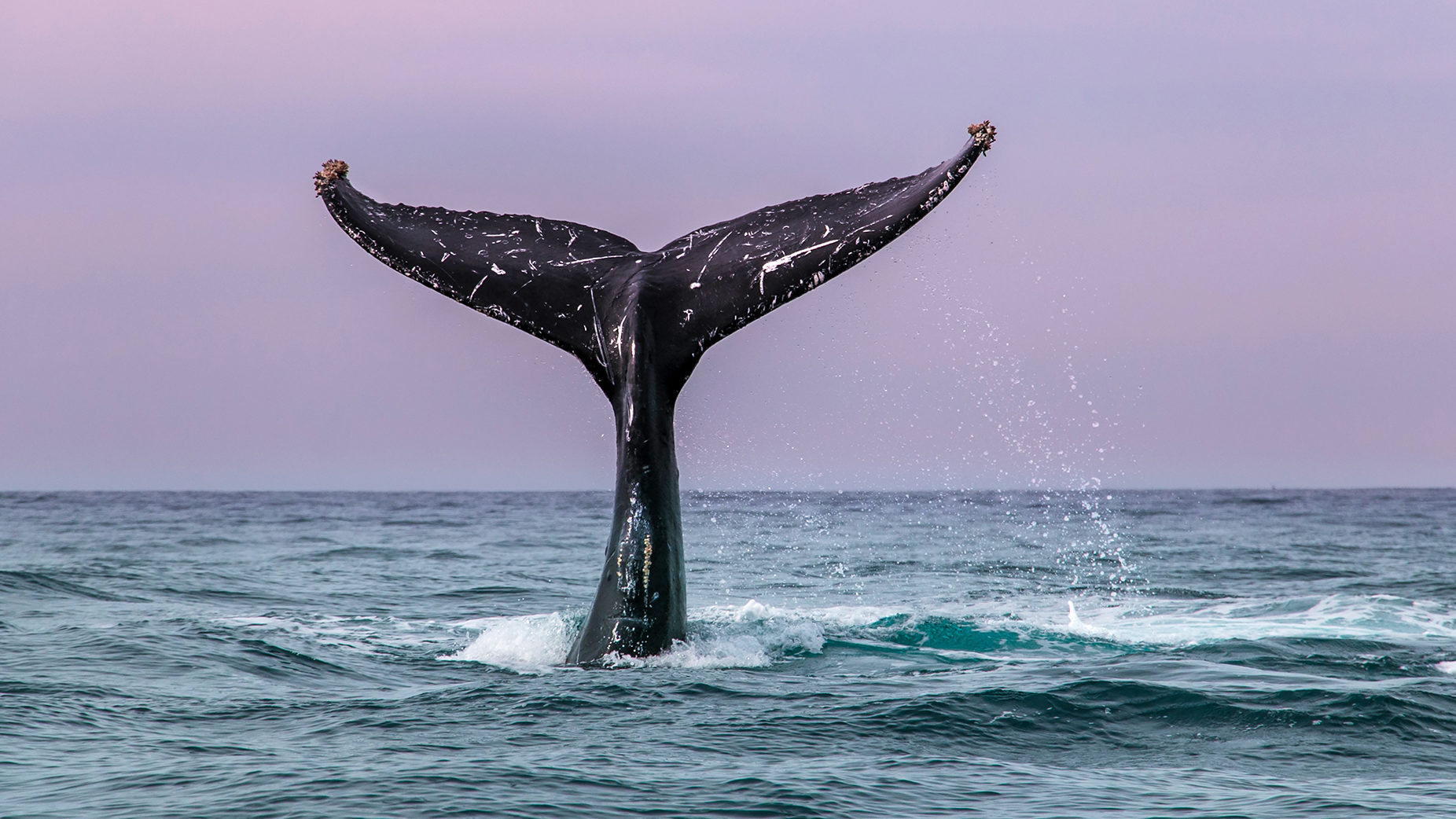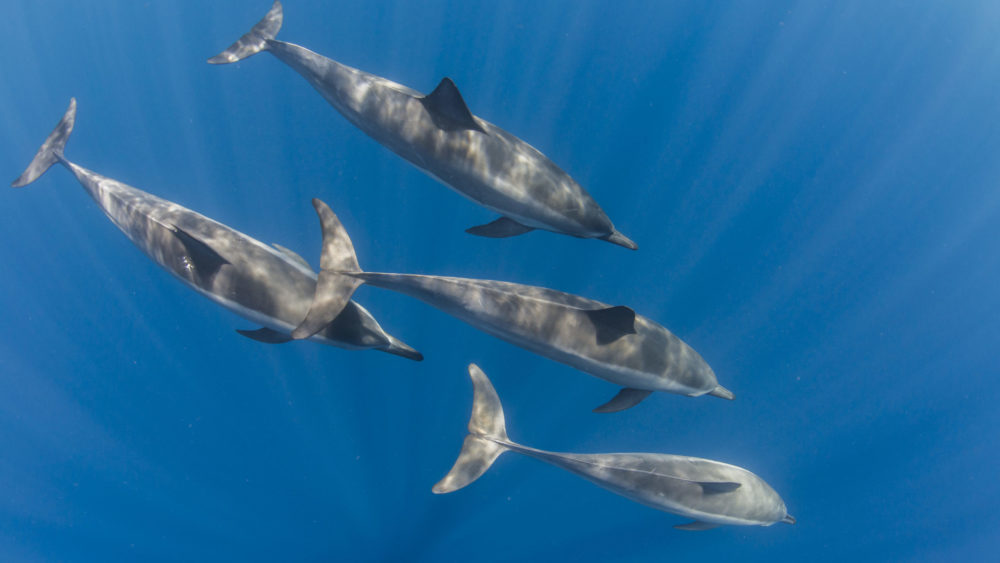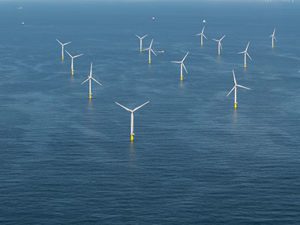As we settle into 2021, Our Shared Seas reached out to our partners in the ocean and climate community to find out what they are most excited and optimistic about in the year ahead. Here are some of the ways they are ready to take action on behalf of the ocean and all of us who depend on it.

Humpback whale. Photo: Michele Roux / Coral Reef Image Bank
What do you see as the biggest opportunity for ocean climate action in the new year?
Brian O’Donnell, director, Campaign for Nature: The biggest opportunity is for countries to include ocean conservation in their updated Nationally Determined Contributions (NDCs) under the Paris Agreement. Many nations have yet to submit updated NDCs. There is increasing momentum for nature-based solutions to climate change to be more prominent in NDCs. Countries should commit to identifying and designating more marine protected and conserved areas in their updated NDCs.
Dr. Gwynne Taraska, climate program director, Ocean Conservancy: At a global scale, countries will have an opportunity to integrate ocean-climate action into the work of the Paris Agreement during the 2021 U.N. climate summit (COP26). There has been a growing movement over the past several years to break down the silos between ocean and climate issues. At COP26, countries should adopt a decision that creates an ongoing forum to promote ocean-based climate solutions—from scaling up offshore renewable energy to protecting blue carbon ecosystems—and to ensure that ocean issues are appropriately considered across the workstreams of the international climate effort.
Mariana Del Valle Prieto Cervantes, clean water and ocean advocate, GreenLatinos: The biggest opportunity for ocean climate action is that we will have a new administration in the United States that understands the impacts of climate change, not just in our environment but with our communities of color, including our Black, Latinx, Indigenous, and low-income communities. This means ocean climate action that will keep communities at the forefront when advocating for ocean-based solutions. This includes investing in coastal restoration to protect our coasts and preserve biodiversity, but also to help mitigate threats to our coastal and frontline communities most impacted by climate change.
Dr. Miriam Goldstein, managing director for energy and environment and director of ocean policy, Center for American Progress: This is a very exciting time! Our country is poised to take climate action after four years of going in the wrong direction. And there is increasing acknowledgement that the ocean is a powerful source of climate solutions. The Ocean-Based Climate Solutions Act of 2020, sponsored by Representatives Raúl Grijalva of Arizona, Kathy Castor of Florida, and 37 of their colleagues, provides a road map to harness the power of the ocean to reduce carbon emissions, protect frontline communities, restore coastal and ocean ecosystems, and create new jobs in the “blue economy.” Congress should pass this bill and the Biden administration should take inspiration from it to immediately use executive authorities to advance ocean climate solutions.
Karen Sack, president and CEO, Ocean Unite: The biggest opportunity for the incoming Biden administration is to invest in a healthy planet. Showing its leadership through its re-commitment to the Paris Agreement and by announcing at the Climate Summit, which it has pledged to host within its first 100 days, that it will work with partners to mobilize the necessary financial resources to invest in determined climate action and close the biodiversity financing gap. This will show developing countries that walked away from the December 2019 UN global climate meeting furious about the lack of financial commitments to address climate change that the U.S. and others are serious about investing in a sustainable future and divesting from an unsustainable past. In turn, it will open doors to strong decisions at international ocean and climate meetings throughout 2021, such as setting global targets to strongly protect at least 30 percent of the ocean by 2030, securing a robust new UN high seas biodiversity treaty, and driving investment into coastal natural solutions, like mangroves, coral reefs, and marine protected areas, to build resilience for communities against extreme weather events and heating seas, as well as help restore and regenerate marine species and ecosystems.

Photo: Renata Romeo / Coral Reef Image Bank
What is the first thing the Biden-Harris administration can do to set us in the right direction on ocean action and climate change?
Helen Smith, ocean climate action associate, Creation Justice Ministries: The Biden-Harris administration can start by reinstating the strongest conservation protections possible for the Northeast Canyons and Seamounts Marine Monument. Protecting this fragile underwater safe haven for a wildly diverse array of God’s creation would both signal the fulfillment of climate promises made and protect an important treasure trove of scientific exploration opportunities.
Sarah Chasis, senior strategist, oceans division, NRDC nature program: We can help make the ocean “climate ready” by designating strong marine protected areas—the ocean’s equivalent of a Yellowstone or Grand Canyon National Park. Protecting a range of ocean areas can protect and restore the vitality of these ecosystems and increase their ability to withstand the stresses of climate change. The Biden-Harris administration should adopt and implement a goal of strongly protecting at least 30 percent of our ocean by 2030—including by restoring protections for the Northeast Canyons and Seamounts Marine National Monument (whose protections were rolled back by the Trump administration)—and support adoption of a similar global ocean goal enforced by a protective high seas treaty.
Lance Kittel, associate director, Inland Ocean Coalition: The Biden-Harris administration can elevate the connection between ocean protection and climate change while prioritizing environmental justice. By taking proactive and positive steps in the early days of office, the administration can set expectations to continue to protect our ocean, maintain and expand marine protections, and ensure sustainable development for fisheries. The Biden administration has the opportunity to strengthen connections between inland and coastal communities by taking climate action—including re-joining the Paris Climate Accord, advancing efforts to protect 30 percent of our land and ocean by 2030, and stopping the expansion of offshore drilling.
Dr. Gwynne Taraska, Ocean Conservancy: The Biden-Harris administration will have the monumental task of re-establishing U.S. climate leadership. One early success will be to create a “blue-green” foreign policy and lead the world in incorporating ocean issues into the global fight against climate change. Rejoining the Paris Agreement will be the first priority. The Administration should also drive the decarbonization of the global shipping sector—which is responsible for greenhouse gas emissions equivalent to those of a G7 country—to align with the Paris Agreement. In addition, as the Administration creates a national climate target under the Paris Agreement that will put the country on course to achieve net-zero greenhouse gas pollution by 2050, it can make U.S. commitments on ocean-climate action, such as scaling up offshore renewable energy and stopping the loss of blue carbon ecosystems.
Mariana Del Valle Prieto Cervantes, GreenLatinos: The first thing the Biden-Harris administration can do to set us in the right direction on ocean action and climate change is to recognize the disparities and environmental injustices happening to our communities of color, including Black, Latinx, Indigenous, and low-income communities. The Biden-Harris administration needs to prioritize our communities and ensure they are put at the forefront of ocean action and other climate change solutions.
Dr. Miriam Goldstein, Center for American Progress: We hope that the Biden-Harris administration sees the ocean as an integral part of its ambitious climate and conservation action agenda. President-elect Biden has taken a powerful first step by appointing former Secretary of State John Kerry, a champion for the ocean throughout his career, as his special presidential envoy for climate. To build off that strong start, the Biden-Harris administration must make nominating a NOAA Administrator, expanding climate research and services, and restoring NOAA’s scientific integrity are among its highest priorities.
Karen Sack, Ocean Unite: To kick-off the 2021 super-year for nature, the Biden-Harris Administration should stand up with China and pledge to bring the global community together in the biggest single act of ocean protection ever—to protect almost four million square kilometers of the Southern Ocean that is currently being proposed by the body responsible for conserving Antarctica’s waters (CCAMLR). Marine protection in Antarctica offers the opportunity to showcase the rebuilding of U.S./China relations and regenerated multilateralism. Just as Antarctica brought countries together at the height of the Cold War, today we face another huge global challenge that requires a global response: the climate emergency and biodiversity loss resulting in the sixth great extinction event. This single pledge would begin the rebuild of a common global action agenda for nature, the ocean, and our climate.

Spinner dolphins. Photo: Ellen Cuylaerts / Coral Reef Image Bank
This past year has underscored our interconnections to each other and to nature. How has the U.S. marine conservation movement adapted during this time and how is it equipped to tackle both challenges and opportunities in the year ahead?
Dr. Miriam Goldstein, Center for American Progress: The insurrection at the Capitol, the COVID-19 crisis, and this summer’s national reckoning with racism and violence against Black people has brought environmental injustices and disparities into long-overdue focus. The ocean’s benefits should be accessible to all, but in reality, frontline communities and communities of color have less access to nature and more exposure to environmental perils and pollution. Communities of color are three times more likely than white communities to live in nature-deprived places—and this is even more pronounced in areas without affordable public coastal access. As local and national leaders attempt to address the climate and nature crises, they must acknowledge the legacy of environmental racism and pursue policies that are centered in justice and equity.
Sarah Chasis, NRDC: We have seen an increased common understanding that that ocean is a central part of our response to the climate crisis, and with it, a commitment to finding equitable and science-based “ocean-climate” solutions. In addition to strongly protecting at least 30 percent of our ocean by 2030, we hope to see other oceans elements in this administration’s swift response to climate change. We must shift from fossil fuels—including ending offshore oil and gas leasing in federal waters—toward renewable energy sources like responsibly-developed offshore wind. For domestic fisheries, we also hope to see renewed commitment to ending overfishing and rebuilding depleted fish stocks, increased scientific support to promote climate-ready fisheries and help fisheries managers address shifting fish stocks, and better protection of essential fish habitat.
Lance Kittel, Inland Ocean Coalition: In spite of a challenging federal environment in recent years, major strides were made during a time where our marine national monuments and marine protected areas faced restriction easements and offshore oil leasing opportunities. Several states united, with bipartisan support, under the call for 10-year moratoria on offshore drilling and moved forward with renewable energy explorations. The marine conservation movement developed strong ties with legislative leaders and set clear priorities for a new administration.
Helen Smith, Creation Justice Ministries: Throughout the last year, Creation Justice Ministries’ climate resilience program has connected marine conservation goals with coastal community environmental justice objectives. Especially in a time when we are physically separated, we need to frame ocean protection in a way that will feed people emotionally and spiritually. We are part of a growing sector of the marine conservation movement that is leveraging natural solutions to help people weather the spiritual and material storms of the climate crisis.
Brian O’Donnell, Campaign for Nature: The community has been able to keep advocacy and conservation efforts moving forward during this period. Even without in-person meetings or summits, the community has been able to highlight new science, secure conservation commitments, and interact across time zones. We have all valued the nature that is in our proximity and relied on our time outside to help us cope. It is clear to all of us that conserving nature isn’t just a nice thing to do—it is fundamental to our survival as a species.










